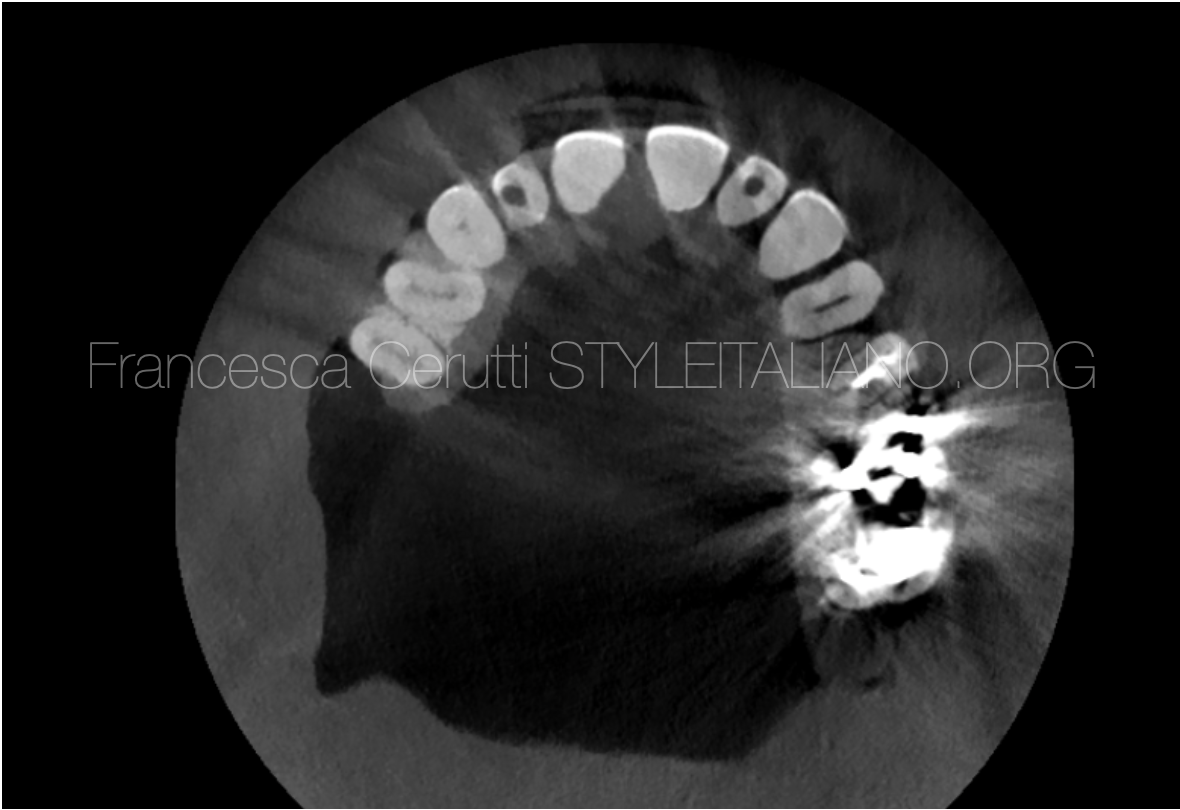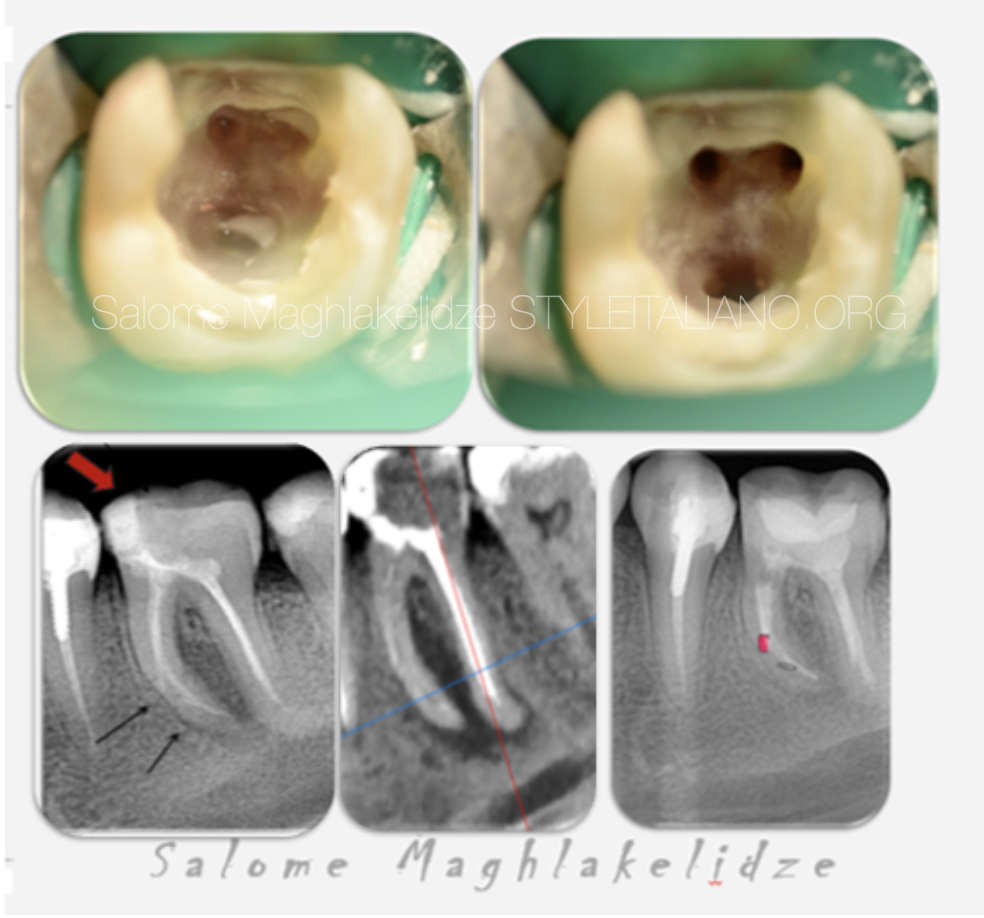
Trend or trap?!
01/07/2023
Fellow
Warning: Undefined variable $post in /var/www/vhosts/styleitaliano-endodontics.org/endodontics.styleitaliano.org/wp-content/plugins/oxygen/component-framework/components/classes/code-block.class.php(133) : eval()'d code on line 2
Warning: Attempt to read property "ID" on null in /var/www/vhosts/styleitaliano-endodontics.org/endodontics.styleitaliano.org/wp-content/plugins/oxygen/component-framework/components/classes/code-block.class.php(133) : eval()'d code on line 2
An endodontic access cavity is an important first step in successful endodontic treatment.
Lately, strongly constricted endodontic access cavities have become quite popular, the idea of which serves to save tissue and thereby increase the tooth's resistance to fracture. Although there is insufficient data to fully support this hypothesis (1), many different modalities have an impact on fracture resistance that should be considered. Residual wall number and method of restoration should be important factors in prediction of tooth fracture resistance.
Whereas when most frequent iatrogenic errors and complications can be consequence of non-adequately prepped access cavity (2). Procedural mishaps, missed anatomy, zips, elbows, ledges, fractured instruments, impaired debridement and/or obturation of root canals pose as the result (3).
It is important to keep the access cavity as small as practical to minimize the risk of procedural errors while sparing the tooth structure for long-term success. That leads us to use Conservative endodontic access preparation which seems to be most proper way to work with less complications (4).
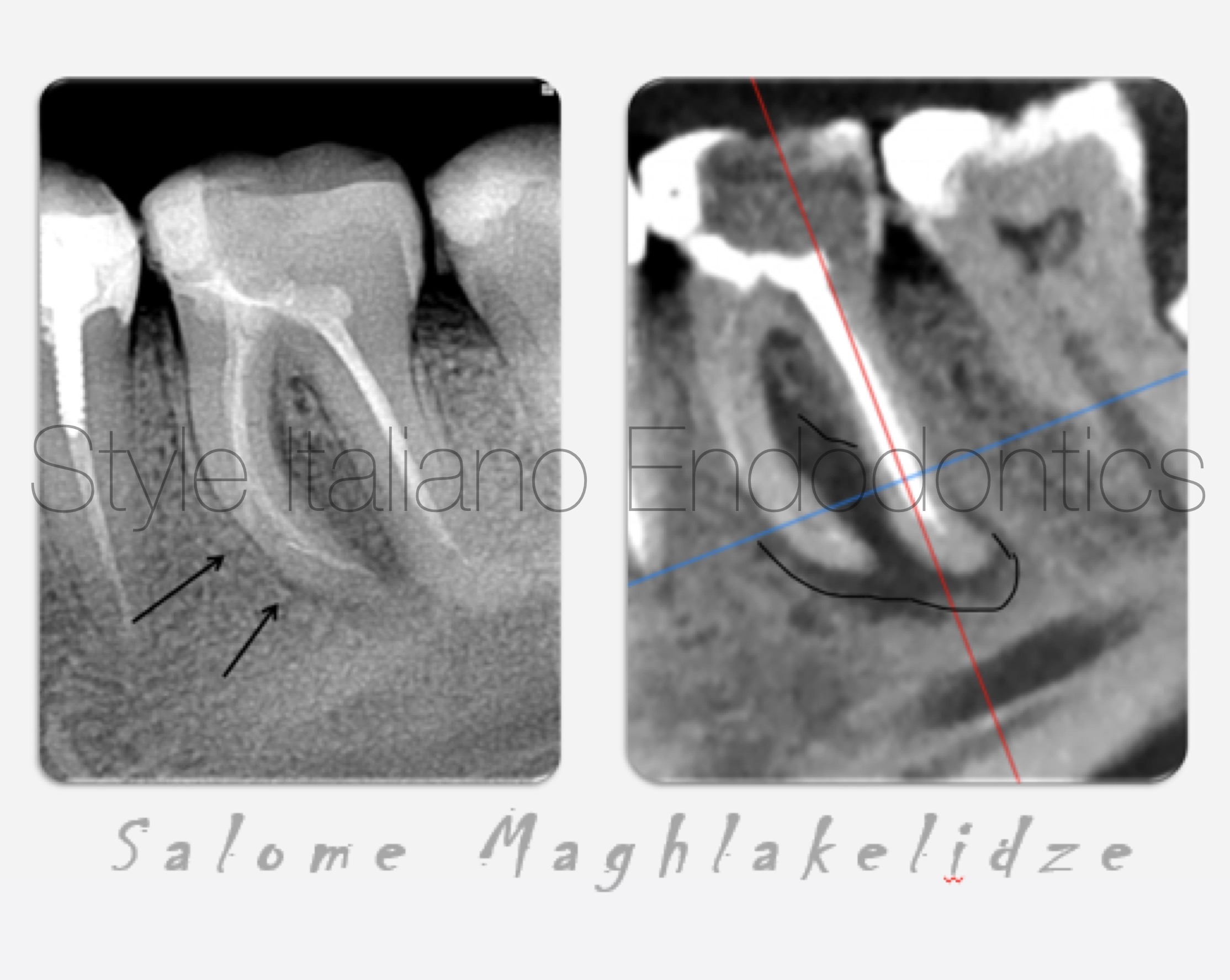
Fig. 1
Referral patient 32 years old women came in our office with pain on baiting on tooth 36. X-ray finding showed caries driven endodontic access with several iatrogenic errors like broken instrument in mesial root canal system, ledge, and perforation; missed canal in distal root; radiolucency around the root. CBCT was conducted for evaluation of anatomy.
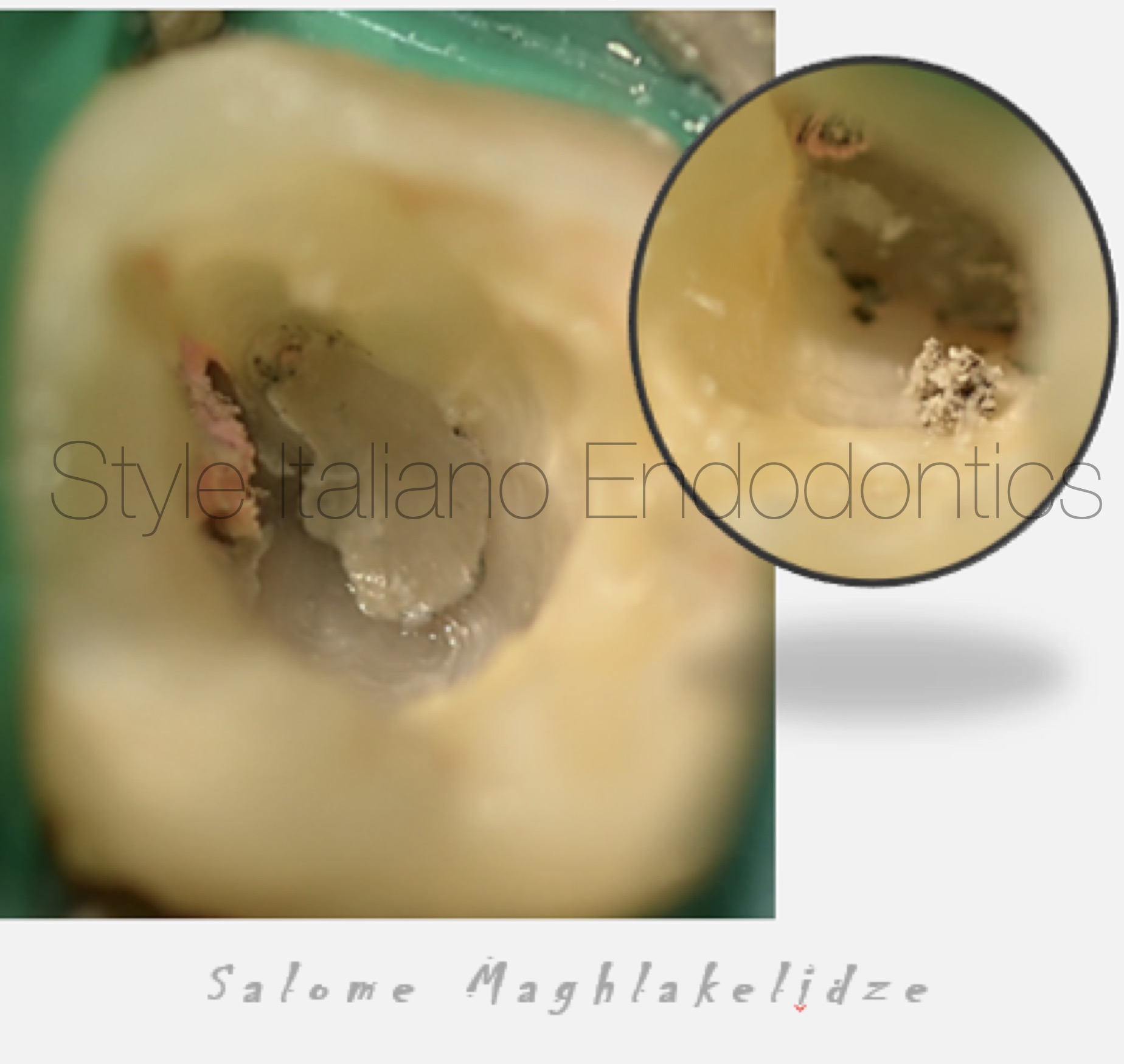
Fig. 2
Lots of necrotic tissue and debris was found under the restoration and residual dentinal roof; pulp chamber was cleaned from all infected material.
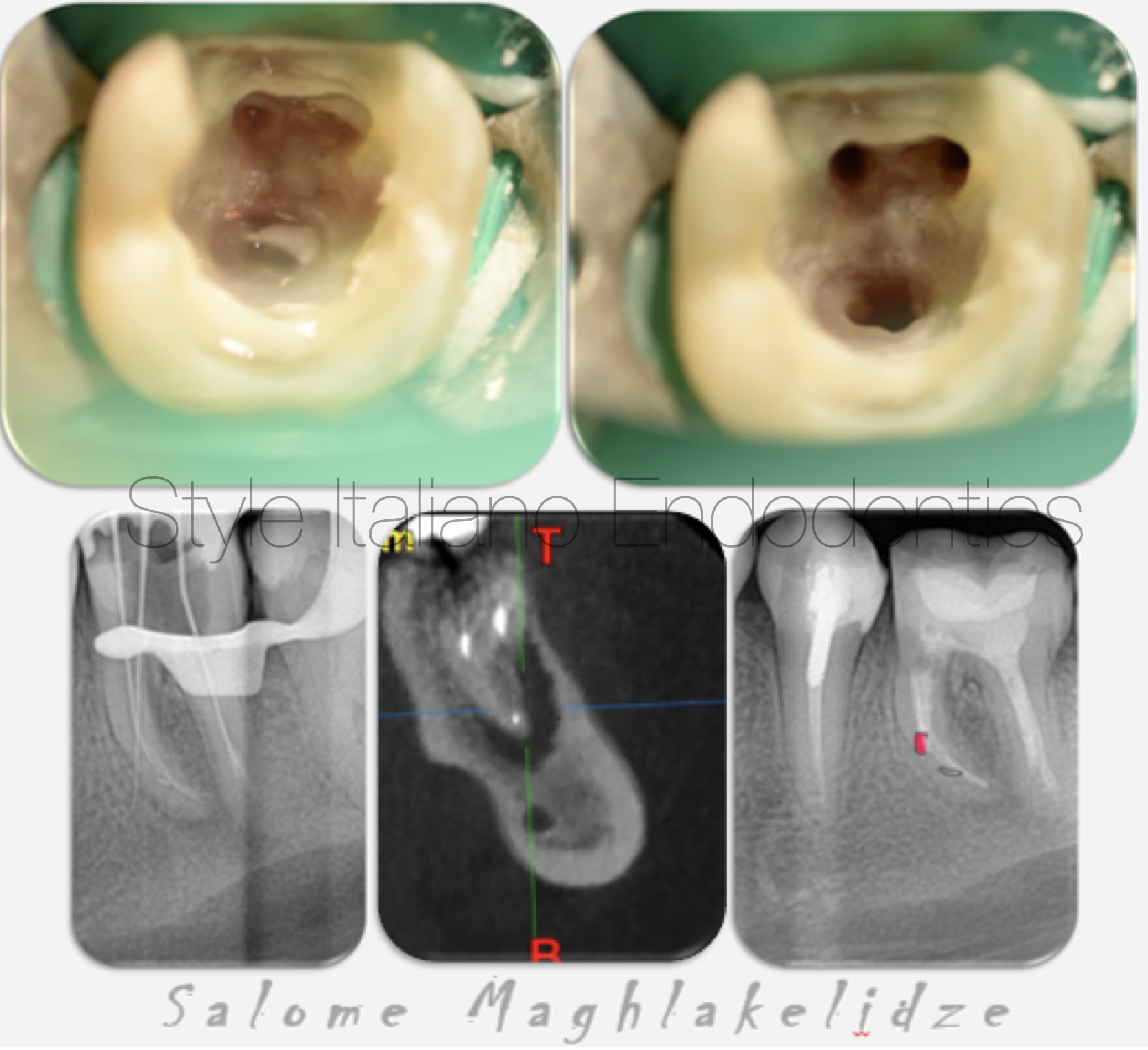
Fig. 3
Mesial canals were merging based on CBCT, fractured instrument was over the curvature, shaping was done from merging canal till the working length, fractured instrument was bypassed to preserve structure of the tooth. Treatment was done in two procedures, after cleaning and shaping MTA was placed to cover the perforation area with MAP system. On second visit canals were obturated with Neo sealer and gutta-percha. Patient was sent for restoration to referral doctor.
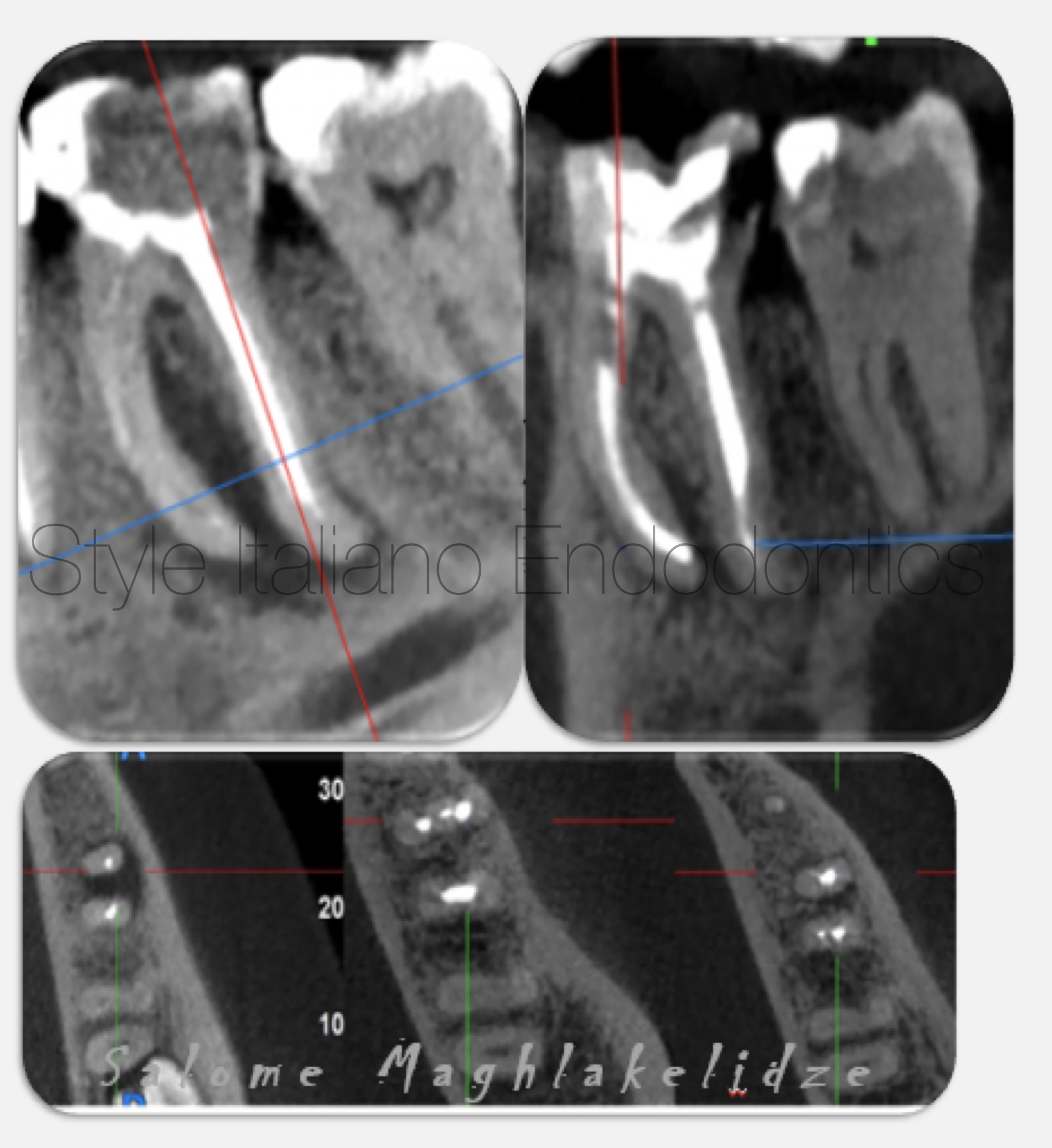
Fig. 4
Follow up was done after 10 months, unfortunately patient doesn’t come back for follow up until she got problems on other teeth, she was assigned to do CBCT for implantation reasons. We can see positive dynamics on tooth 36.
Conclusions
Trends should be approached carefully so not to be trapped in failure. Skills of operator, armamentarium and proper knowledge should guide to proper access cavity design. To avoid iatrogenic errors in endodontic treatment it is necessary to follow rules of quality shaping. Never neglect anatomy of the tooth, take care of reasonable endodontic access cavity preparation, which gives you proper control over correct shaping and cleaning that can lead to successful endodontic outcome of tooth.
Bibliography
- Saeed M, Al-Obadi M, Salim A, Alsawaf AY, Hadi K. Impact of Access Cavity Design on Fracture Resistance of Endodontically Treated Molars: A Systematic Review. Clin Cosmet Investig Dent. 2021 Jan 7;13:1-10. doi: 10.2147/CCIDE.S287995. PMID: 33442299; PMCID: PMC7800454.
- Ballester B, Giraud T, Ahmed HMA, Nabhan MS, Bukiet F, Guivarc'h M. Current strategies for conservative endodontic access cavity preparation techniques-systematic review, meta-analysis, and decision-making protocol. Clin Oral Investig. 2021 Nov;25(11):6027-6044. doi: 10.1007/s00784-021-04080-7. Epub 2021 Oct 8. PMID: 34623506.
- Chan MYC, Cheung V, Lee AHC, Zhang C. A Literature Review of Minimally Invasive Endodontic Access Cavities - Past, Present and Future. Eur Endod J. 2022 Mar;7(1):1-10. doi: 10.14744/eej.2022.62681. PMID: 35353062; PMCID: PMC9035856.
- Plotino G, Grande NM, Isufi A, Ioppolo P, Pedullà E, Bedini R, Gambarini G, Testarelli L. Fracture Strength of Endodontically Treated Teeth with Different Access Cavity Designs. J Endod. 2017 Jun;43(6):995-1000. doi: 10.1016/j.joen.2017.01.022. Epub 2017 Apr 14. PMID: 28416305.



